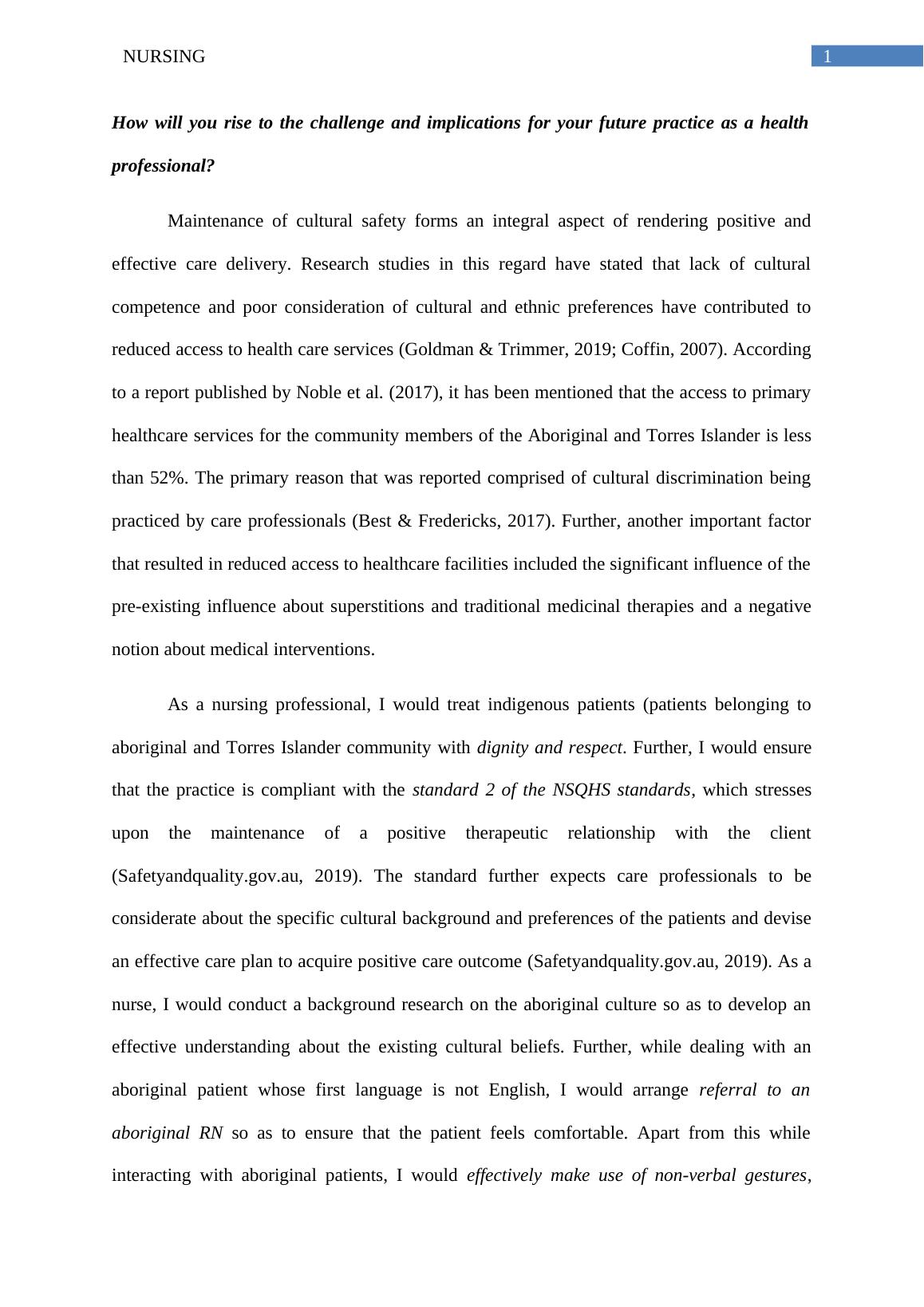Rising to the Challenge: Cultural Safety in Nursing
Critically reflect on how you will rise to the challenge and the implications for your future practice as a health professional.
4 Pages740 Words49 Views
Added on 2022-12-26
About This Document
This article discusses the significance of cultural safety in nursing and its impact on healthcare access for indigenous patients. It emphasizes the need for cultural competence and provides strategies for providing effective care to patients from different cultural backgrounds.
Rising to the Challenge: Cultural Safety in Nursing
Critically reflect on how you will rise to the challenge and the implications for your future practice as a health professional.
Added on 2022-12-26
ShareRelated Documents
End of preview
Want to access all the pages? Upload your documents or become a member.
Treating Scabies in Indigenous Paediatric Patients
|1
|1590
|18
Pathophysiology and Prevalence of Scabies
|1
|1505
|37
Cultural Safety in Healthcare
|8
|2356
|201
Core principles of cultural capability for health care professional
|4
|556
|99
Improving Cultural Safety for Aboriginal and Torres Strait Islanders in Healthcare Facility
|6
|1400
|372
traditional custodians Assignment PDF
|6
|2426
|78


